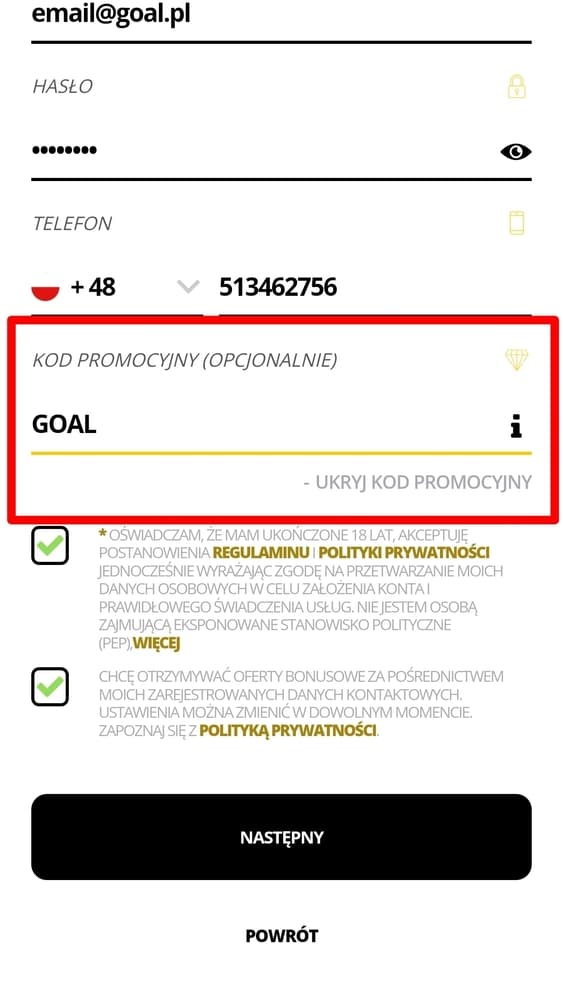In a world where technology rapidly transforms various sectors, understanding the latest developments becomes essential for businesses looking to thrive. Pinco stands at the forefront of this evolution, delivering insights pinco casino and practical approaches that empower organizations to adopt state-of-the-art practices. This platform functions as a beacon for those who aim to harness tools designed to boost efficiency and enhance productivity.
Through in-depth research and analysis, Pinco specializes in navigating the complexities of emerging technologies. Whether it’s artificial intelligence reshaping data processing or blockchain revolutionizing transactions, the platform offers a wealth of information tailored to meet specific industry needs. Engaging with such resources can significantly reduce the learning curve, allowing companies to remain competitive in an ever-changing landscape.
Utilizing a variety of resources, from interactive webinars to detailed whitepapers, Pinco equips professionals with actionable strategies. Emphasizing the importance of community and collaboration, the platform fosters connections among thought leaders and innovators, facilitating knowledge sharing that accelerates growth. By tapping into this network, businesses gain a deeper understanding of how to implement transformative practices directly relevant to their goals.
Revolutionizing Industries Using Pinco’s Technology
In today’s competitive landscape, operational efficiencies are paramount. Pinco’s advanced methodologies leverage real-time data analytics, enabling organizations to swiftly adapt to market dynamics. By incorporating machine learning algorithms, businesses can enhance predictive maintenance systems, reducing downtime by up to 30% and cutting operational costs substantially.
Manufacturing processes are being transformed through automation tools. Pinco’s robotics solutions streamline assembly lines, leading to a remarkable 40% increase in production capacity. Integration of Internet of Things (IoT) devices facilitates seamless communication among equipment, optimizing resource management and minimizing waste.
In the realm of healthcare, Pinco’s applications significantly elevate patient monitoring systems. The implementation of wearable technology allows for continuous health tracking, improving patient outcomes. Research indicates that such enhancements can reduce hospital readmission rates by approximately 25%, benefiting both providers and patients alike.
Financial services also experience a paradigm shift via Pinco’s blockchain solutions. Enhanced security features protect sensitive data and reduce fraud incidents, which have been reported to drop by nearly 50% in institutions adopting these systems. Moreover, the transparency offered by blockchain technology fosters trust among clients and regulators.
Retail sectors benefit from customer behavior analytics deployed by Pinco. Tailoring marketing strategies based on real-time consumer insights leads to improved engagement rates, with studies showing an increase in customer retention by up to 20%. Data-driven decisions optimize inventory management, minimizing overstock and understock scenarios.
Logistics and supply chain management undergo a significant upgrade through Pinco’s tracking software. Utilization of geolocation technology allows companies to monitor shipments in real time, enhancing delivery efficiency by 15%, and improving overall customer satisfaction through timely updates.
Educational institutions leverage Pinco’s e-learning platforms to provide personalized learning experiences, boosting student performance and retention rates. Interactive modules cater to diverse learning styles, resulting in an uptick in course completion rates by at least 30% in participating organizations.
In conclusion, industries embracing Pinco’s technologies not only enhance their operational capabilities but also set new benchmarks for success in their respective fields. Continuous adaptation to technological advancements will be crucial for remaining competitive in an ever-evolving marketplace.
Transformative Applications of AI in Manufacturing
Artificial intelligence has emerged as a catalyst for profound change within manufacturing environments, enhancing efficiency and precision across various processes. One notable application is predictive maintenance, which employs machine learning algorithms to analyze equipment data and predict failures before they occur. By implementing such systems, companies can reduce downtime by up to 50%, resulting in significant cost savings and increased operational efficiency.
Another critical area is quality control. AI systems utilizing computer vision technology can assess products at unprecedented speed and accuracy, identifying defects that human inspectors might miss. Implementing these systems can lead to a 20% reduction in defective products, thereby minimizing waste and improving customer satisfaction.
Supply chain optimization is also a significant domain where AI contributes. Algorithms can analyze vast amounts of data to forecast demand trends, enabling manufacturers to make informed decisions regarding inventory management. This proactive approach can reduce excess stock levels by approximately 30%, freeing up capital and improving cash flow.
Additionally, AI-driven automation is revolutionizing assembly lines. Robots equipped with intelligent systems can adapt to variations in product design without requiring extensive reprogramming. This flexibility allows for smoother transitions between production batches, enhancing responsiveness to market demands.
Furthermore, natural language processing technologies are being utilized for streamlining communication within manufacturing units. By analyzing communication patterns, companies can identify bottlenecks and facilitate smoother information flow among teams and departments, ultimately leading to improved collaboration and task execution.
Implementing AI strategies in manufacturing requires a thoughtful approach. Organizations should consider pilot projects to validate technology suitability and scalability before broader integration. Engaging employees through training in AI tools enhances acceptance and effectiveness, ensuring seamless adaptation to new methodologies.
Smart Automation: Redefining Workplace Efficiency
In today’s fast-paced business landscape, organizations increasingly turn to advanced automation technologies for enhanced productivity. By streamlining workflows and reducing manual input, companies can focus on strategic initiatives rather than routine tasks. Implementing smart automation can result in significant time savings and cost reductions.
According to a recent study, organizations that adopt automation experience a 30% increase in overall productivity. Key areas benefiting from this technology include customer service, finance, human resources, and supply chain management.
Department
Process Automation Benefits
| Customer Service |
24/7 support via chatbots reduces response times and enhances customer satisfaction. |
| Finance |
Automated invoicing and expense management decrease errors and accelerate processing times. |
| Human Resources |
Streamlined recruitment processes allow for quicker candidate selection and onboarding. |
| Supply Chain |
Predictive analytics facilitates proactive inventory management and demand forecasting. |
Additionally, integrating robotic process automation (RPA) aids companies in eliminating repetitive tasks, freeing up employee time for strategic responsibilities. By utilizing RPA, analysis shows that businesses can save up to 40% of labor costs.
Successful implementation of smart automation requires careful planning. Organizations should start by identifying processes that are ideal candidates for automation. Criteria include high repetitiveness, volume, and susceptibility to human error.
Monitoring and measuring key performance indicators (KPIs) post-implementation is crucial for evaluating effectiveness. Metrics such as processing time, error reduction rates, and employee satisfaction should be regularly assessed to ensure that automation delivers expected outcomes.
Ultimately, smart automation is a transformative approach that redefines operational efficiency. By embracing these technologies, businesses can achieve not only enhanced productivity but also increased agility in responding to market changes.
Unlocking New Possibilities Through Pinco’s Strategies
Harnessing potential relies on a strategic approach tailored to contemporary challenges. Emphasizing a collaborative model accelerates creativity, enabling teams to create breakthrough concepts. By integrating diverse perspectives, projects benefit from a rich tapestry of ideas, fostering an environment where radical advancements can flourish.
Data analysis remains a cornerstone in shaping effective methodologies. Leveraging actionable insights allows organizations to pinpoint trends and consumer behaviors. Emphasizing predictive analytics can enhance decision-making, driving resource allocation towards high-impact initiatives. Companies adopting this proactive stance report up to 20% increase in operational efficiency.
Implementing agile frameworks facilitates rapid prototyping and testing, enabling quick responses to market demands. By adopting iterative processes, teams can refine products or services based on real-time feedback. This responsiveness not only minimizes development costs but also boosts customer satisfaction.
Investing in talent development ensures a workforce equipped to navigate complexities. Educational programs centered around emerging technologies, such as artificial intelligence and machine learning, prepare employees for future roles. Organizations prioritizing continuous learning experience a remarkable turnover reduction, enhancing team stability and expertise.
Collaboration ventures, where startups and established enterprises join forces, lead to unparalleled synergies. These partnerships can result in novel products that neither could achieve independently. Encouraging open communication fosters trust, making it easier to tackle challenges together.
Risk management is essential to maximize returns on innovative endeavors. Identifying potential obstacles early helps in crafting contingency plans, thereby safeguarding investments. Companies that proactively manage risks experience a remarkable decrease in project failures, maintaining a steady trajectory towards success.
Incorporating sustainability into strategic planning not only addresses environmental concerns but also resonates with conscious consumers. Businesses committed to sustainable practices demonstrate higher brand loyalty, translating into a stable customer base. Prioritizing eco-friendly initiatives can bolster public perception significantly, attracting a new demographic of clients.
As industries evolve, embracing transformative shifts is crucial. By remaining adaptable, organizations can navigate uncertainties and capitalize on new ventures rapidly. The convergence of technology and creativity holds the key to staying ahead in an ever-changing landscape.
Leveraging Data-Driven Insights for Business Growth
Effective utilization of data analytics can significantly enhance organizational performance. Companies today have access to vast amounts of information, yet many fail to exploit it fully. Below are strategies for employing analytics to drive growth.
- Identify Key Performance Indicators (KPIs)
- Establish relevant metrics that align with business goals.
- Focus on actionable insights rather than vanity metrics.
- Implement Predictive Analytics
- Use historical data to forecast trends and customer behaviors.
- Leverage algorithms to improve decision-making processes.
- Segment Customers Effectively
- Analyze demographic and behavioral data to tailor marketing efforts.
- Utilize clustering techniques to identify distinct groups within your customer base.
- Optimize Supply Chain Operations
- Analyze inventory data to minimize costs and improve efficiency.
- Employ real-time analytics to enhance responsiveness to market changes.
- Enhance Customer Experience
- Utilize feedback and usage data to refine services and products.
- Implement A/B testing to validate changes and drive improvements.
Organizations that prioritize data-driven strategies are better positioned to adapt to market changes. Empower teams with tools for data analysis to foster a culture of informed decision-making.
Investing in technology that boosts data accessibility can yield high returns. Consider platforms that facilitate real-time collaboration and analysis to harness collective insights effectively. Regularly review and adjust strategies based on performance data to ensure sustained competitive advantage.


















